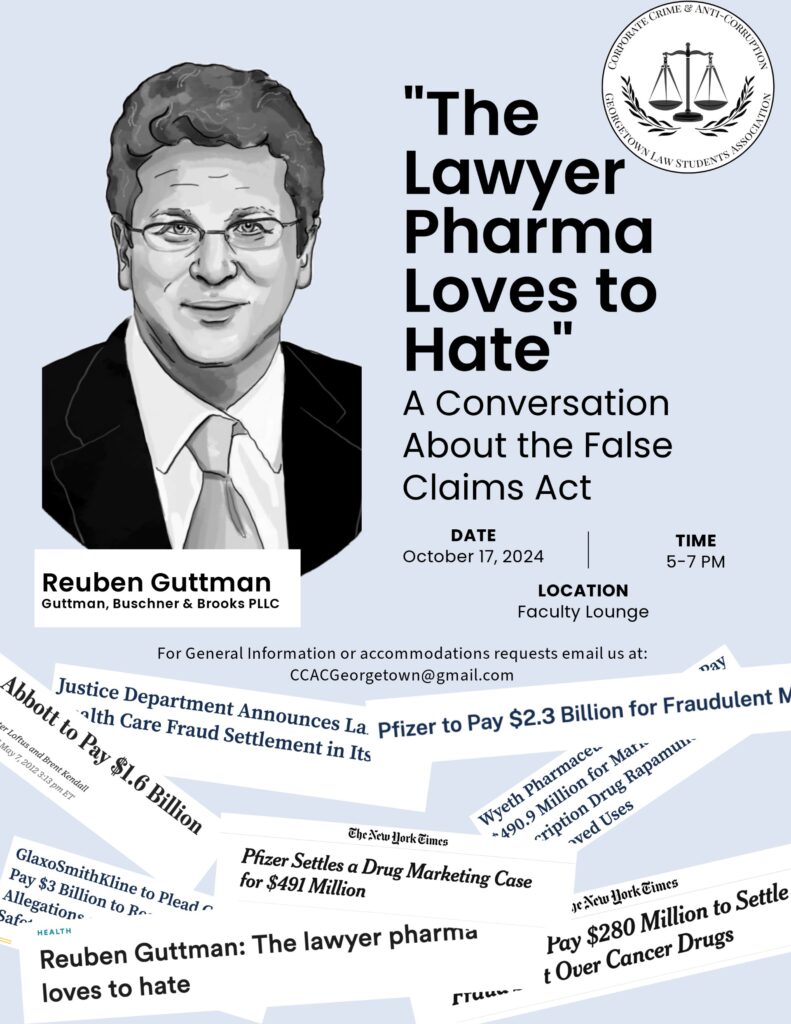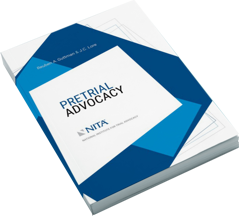Program Summary
Think you know the rules of evidence? Think again! This engaging CLE will cover recent changes, commonly misunderstood provisions, and overlooked evidentiary rules that could make or break your case. Whether you’re in the courtroom every day or just brushing up, this session will help you confidently navigate key evidentiary challenges. This program will be packed with what you need to gain stronger command of these critical evidence rules. Join us for this must-attend CLE and make sure your evidence game is courtroom-ready!
Key topics to be discussed:
- Rule 106 – The Rule of completeness: When can you force the opposing party to introduce the rest of the story?
- Rule 107 – Illustrative aids (a new rule!): How and when can you use visuals to support your case?
- Rule 201 – Judicial notice: What facts can the court accept without traditional methods of proof, and how do you use this to your advantage?
- Rule 615 – Sequestration: Who can you exclude from the courtroom and why might you want to?
- Rule 807 – Residual exception to the hearsay rule: When can hearsay still come in, even when it doesn’t fit a Rule 803 or Rule 804 exception?
- Rule 1002 – The best evidence rule: What’s really required when proving the contents of a document?
- Rule 401- Relevance: What is really relevant and when is the rule being used to be backdoor in evidence for other purposes?
- Rule 403- Probative value and unfair prejudice: What are some examples of unfair prejudice, confusion, or waste of time that might succeed in getting evidence excluded?
- Rules 801 and 803- Hearsay: What are the common misconceptions about hearsay and exceptions everyone should consider using?
- Rules 901 and 902- Authentication: How do issues relating to Artificial Intelligence play into the authentication of evidence?
- Rule 1006- Summaries: When can you avoid dealing with the hassle of documents?
Date / Time: March 24, 2025
- 2:00 pm – 4:10 pm Eastern
- 1:00 pm – 3:10 pm Central
- 12:00 pm – 2:10 pm Mountain
- 11:00 am – 1:10 pm Pacific
Agenda
I. Rule 106 – The Rule of completeness: When can you force the opposing party to introduce the rest of the story? | 2:00pm – 2:10pm
II. Rule 107 – Illustrative aids (a new rule!): How and when can you use visuals to support your case? | 2:10pm – 2:20pm
III. Rule 201 – Judicial notice: What facts can the court accept without traditional methods of proof, and how do you use this to your advantage? | 2:20pm – 2:30pm
IV. Rule 615 – Sequestration: Who can you exclude from the courtroom and why might you want to? | 2:30pm – 2:40pm
V. Rule 807 – Residual exception to the hearsay rule: When can hearsay still come in, even when it doesn’t fit a Rule 803 or Rule 804 exception? | 2:40pm – 2:50pm
VI. Rule 1002 – The best evidence rule: What’s really required when proving the contents of a document? | 2:50pm – 3:00pm
Break | 3:00pm – 3:10pm
VII. Rule 401- Relevance: What is really relevant and when is the rule being used to be backdoor in evidence for other purposes? | 3:10pm – 3:22pm
VIII. Rule 403- Probative value and unfair prejudice: What are some examples of unfair prejudice, confusion, or waste of time that might succeed in getting evidence excluded? | 3:22pm – 3:34pm
IX. Rules 801 and 803- Hearsay: What are the common misconceptions about hearsay and exceptions everyone should consider using? | 3:34pm – 3:46pm
X. Rules 901 and 902- Authentication: How do issues relating to Artificial Intelligence play into the authentication of evidence? | 3:46pm – 3:58pm
XI. Rule 1006- Summaries: When can you avoid dealing with the hassle of documents? | 3:58pm – 4:10pm
Speakers
Veronica J. Finkelstein | Wilmington University School of Law
Veronica J. Finkelstein combines the best of practice and teaching, devoting herself to developing the next generation of top advocates. She is both an experienced litigator and a skilled educator with diverse scholarly interests. Finkelstein spent a majority of her career as an Assistant U.S. Attorney with the U.S. Department of Justice in Philadelphia before transitioning to a fulltime teaching role at the Wilmington University School of Law.
At the U.S. Attorney’s Office, she served as the civil division training officer and paralegal supervisor before being selected as senior litigation counsel. Finkelstein handled various civil affirmative and defensive matters and criminal child exploitation cases. She tried numerous civil defensive cases to winning verdicts, including tort, employment law, and medical malpractice cases. She also successfully litigated cases on appeal.
In addition to this defensive work, Finkelstein investigated and prosecuted affirmative fraud claims, including qui tam actions. In 2014 she was awarded the Executive Office of United States Attorneys Director’s Award for Superior Performance as a Civil Assistant U.S. Attorney.
Before joining the Department of Justice, Finkelstein clerked for the Honorable Jane Cutler Greenspan on the Pennsylvania Supreme Court. She also previously worked as a construction litigator at Duane Morris, LLP and Cohen Seglias Pallas Greenhall & Furman, PC.
A gifted teacher who regularly works with both lawyers and law students, Finkelstein has taught at the U.S. Department of Justice’s National Advocacy Center on ethics, appellate advocacy, legal writing, and trial practice. She frequently serves as a program director for the National Institute for Trial Advocacy, where she teaches depositions, motion practice, trial advocacy, and legal writing programs. In 2024 she was awarded NITA’s Jo Ann Harris Public Service Award.
Prior to entering academia full time, Finkelstein served as adjunct faculty of law at Drexel Law, Emory Law, and Rutgers Law. She was awarded the Carl “Tobey” Oxholm III Outstanding Contribution to the Thomas R. Kline School of Law Community Award in 2021 and was named Rutgers Law School Adjunct Professor of the Year every year she taught at Rutgers Law.
Finkelstein’s scholarship is as diverse as her litigation and teaching experience. Her scholarship has addressed various topics, from evidence, to civil procedure, to constitutional law. Her essay “The Quest to Normalize Questments” was selected as the 2024 winner of Temple Law Review’s Edward D. Ohlbaum Paper in Advocacy.
She is also the co-author of the Professional Responsibility textbook “Ethical Lawyering: A Guide for the Well-Intentioned,” which contextualizes the rules of professional conduct in realistic litigation settings. The textbook is now in its second edition.
Finkelstein graduated, with honors, from the Emory University School of Law. She was a highly competitive member of Emory Law’s moot court society and was selected for the Order of the Barristers. She received her undergraduate degrees, with honors, from the Pennsylvania State University.
Reuben Guttman | Guttman, Buschner & Brooks, PLLC
Reuben Guttman is a founding member of Guttman, Buschner & Brooks, PLLC where his practice involves civil rights, whistleblowers, class actions and complex litigation. The International Business Times has referred to him as “one of the world’s most prominent whistleblower attorneys.” Citing “wins recouping billions of dollars for the federal and state governments,” Boston Globe’s STAT News referred to him as the “The Lawyer Pharma Loves to Hate.”
Guttman has represented workers, unions, and pension funds in complex litigation. For over a decade, he has served as the chief outside counsel to the Oil, Chemical & Atomic Workers International Union, AFL-CIO/CLC, in a series of labor and environmental cases that enhanced safety and environmental conditions at Manhattan Project nuclear weapons sites while driving dread disease compensation legislation for nuclear weapons workers across the nation.
In 2020, he served as lead counsel in a federal class action lawsuit against the South Carolina Department of Corrections and secured a consent order mandating Hepatitis C testing and treatment for 17,000 inmates.
Guttman is currently a faculty member of the American University School of Public Affairs where he teaches Equal Protection/Civil Rights, and he has been an Adjunct Professor at Emory Law School and a Senior Fellow at Emory Law’s Center for Advocacy and Dispute Resolution. He is a Founder and Senior Advisor to the Emory Corporate Governance and Accountability Review (ECGAR). He is the 2015 recipient of the Emory Law Alumni Service Award.
He has taught trial advocacy and complex case investigations in the United States, China, and Mexico, and he has co-authored three case files – two published by Emory Law and one published by the National Institute of Trial Advocacy where he is a faculty member.
He is co-author (with J.C. Lore III of Rutgers Law) of the textbook, Pretrial Advocacy (Wolters Kluwer Spring, 2021). He is a chapter co author (with Traci Buschner) and wrote the introduction for Remote Advocacy: A Guide to Survive and Thrive (Wolters Kluwer and National Institute of Trial Advocacy, 2020).
Guttman has written or co-authored more than 100 articles or opinion pieces and multiple book chapters and law review pieces. He is a monthly columnist for Law360 where he writes on litigation and politics. His article, Pharmaceutical Regulation in the United States; a Confluence of Influences, wastranslated and published in Mandarin in the Peking University Public Interest Law Journal, Vol 1, Page 187 (2010).
Guttman is a Fellow of the American Bar Foundation; he is past member of the Board of Directors of the American Constitution Society (ACS) where he is currently a member of the ACS Board of Advisors. Guttman received his JD from Emory University and his BA in American History from the University of Rochester. He is the founder of www.whistleblowerlaws.com. He began his legal career as a Washington, DC counsel for the Service Employees International Union, AFL-CIO, where he served for five years.
To register, to learn about CLE and more visit https://mylawcle.com/products/evidence-refresher-new-overlooked-rules-every-litigator-should-know/

